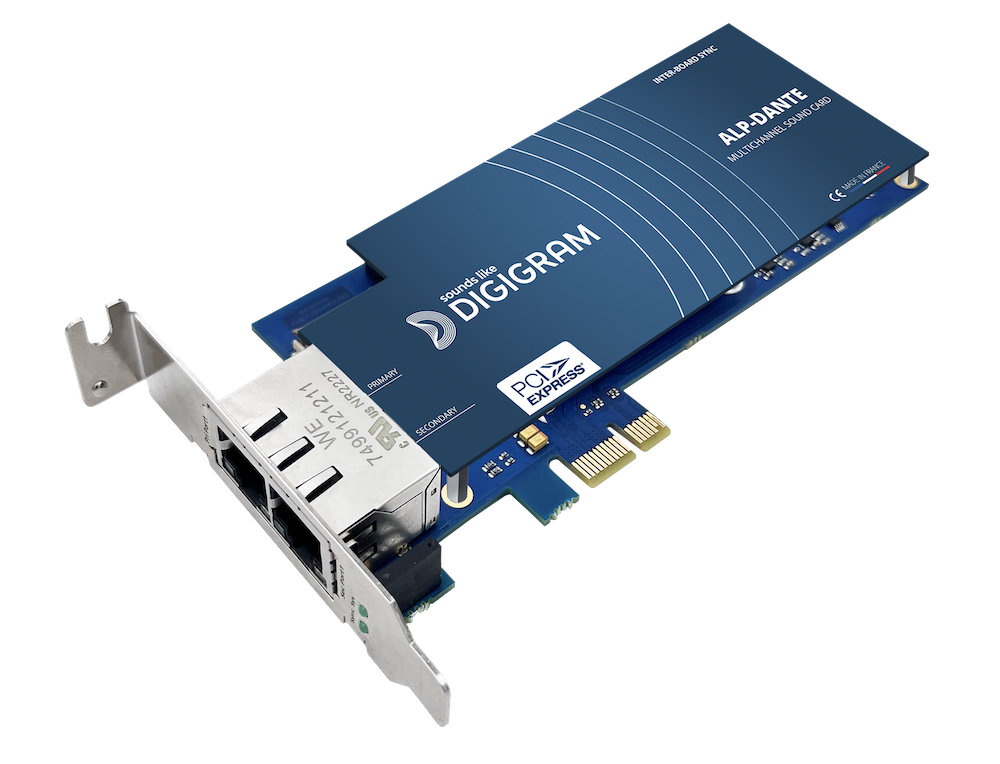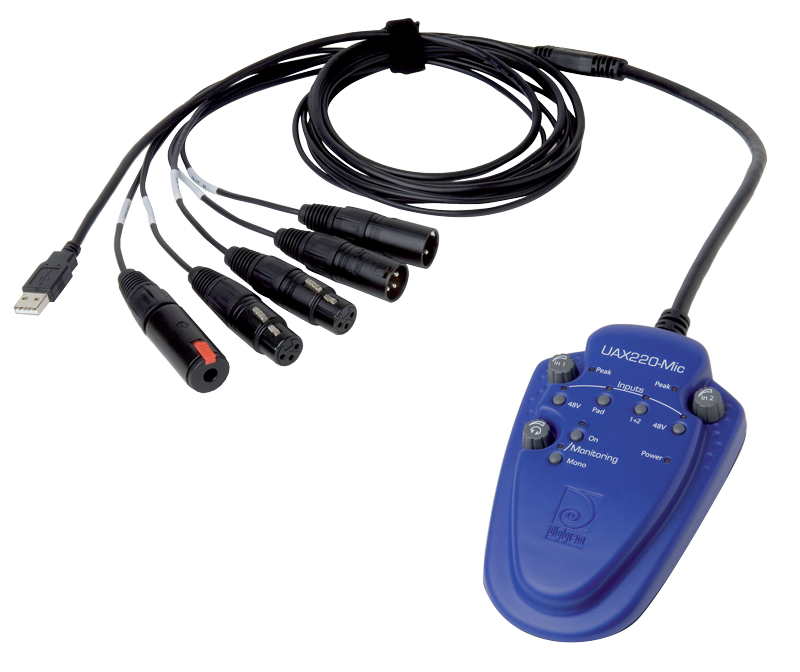DANTE PCIe SOUND CARD
Smart and ultra versatile

ALP-DANTE
Redefine ‘versatility’ with the PCIe ALP-DANTE audio interface: its low-profile form-factor design matches most PCs and servers to address many applications. Its fanless design reduces consumption and is an asset for durability and sustainability.
The card’s connectivity, combined with 64 channels of playback and 64 recording channels to/from a Dante network, opens new possibilities to reach beyond usual applications.
ALP-DANTE operates under Windows or Linux environments to address various applications. Built on the same reliable and stable architecture as all ALP cards, ALP-DANTE is the perfect match for mission-critical applications where audio is key: its versatility works wonders in broadcast, public safety, medical, transportation, or countless industry markets.
DOWNLOADS
BENEFITS
SPECIFICATIONS
Drivers for Windows
and Linux
64 playback channels
64 recording channels
Switching ports mode
Redundant ports mode
Benefits
Low profile PCIe
Fanless design
Compatibility with AES67 & SMPTE ST2110-30
4 Eth ports for versatile Dante network connectivity
Management via Dante controller and Dante device manager

Low Profile
2 Eth ports

Low Profile
4 Eth ports

Full-height Profile
4 Eth ports
Specifications
Format
Form Factor
Low profile PCIe
Full-height PCIe (with the provided additional full-height bracket)
Dimensions
L: 168 mm x H: 69 mm x l: 20 mm
L: 6.6 inch; H: 2.7 inch; l: 0.8 inch
L: 168 mm x H: 99 mm x l: 20 mm
L: 6.6 inch; H: 3.9 inch; l: 0.8 inch
Expansion Bus
PCI Express TM (PCIe TM) x1 (x2, x4, x8, x16 compatible)
Control panel
Digigram ALP-X ASIO Settings (Windows)
Asio Control Panel: up to 8 ALP-X cards
Select I/Os used through Asio
(others can be used through Wasapi)
Digigram ALP-X Manager (Windows)
Asio Control Panel: up to 8 ALP-X cards
One unified control panel for the whole ALP-X range
Manages up to 8 ALP-X cards
Vu-meters, clock frequency
Firmware update

Drivers
Supported OS
Windows: as of Windows 10 and Server 2016
Linux:
- Ubuntu: (ver. 20.04 – kernel 5.15, ver. 22.04 – kernel 6.5)
- Debian 11 – kernel 5.10
- Debian 12 – kernel 6.1
- RHEL 9 kernel 5.14
Drivers
Windows: Asio, Wasapi/DirectSound
Linux: Alsa – The Alsa driver is currently supplied by Digigram so that you can compile it for your Linux distribution.
One Driver Package
Multi-application and multi-card
API available to access the parameters
SPECIFICATIONS
Network connectivity
- Configuration with two network ports
2 x Gbps Eth ports that can be used in redundancy mode, or in switching mode
- Configuration with four network ports
4 Eth ports on the full-height bracket, or 2 Eth ports on each low-profile bracket
-
- Switching mode: 1 Primary port, 3 switching ports
- Redundancy mode: 1 Primary port + 1 associated switching port, 1 Secondary port + 1 associated switching port
Input and output channels
- 64 x 64 channels at 44.1kHz and 48 kHz
- 32 x 32 channels at 88.2 kHz and 96 kHz
- 16 x 16 channels at 176.4 kHz and 192 kHz
Audio flows
- Maximum 32 input and 32 output streams
Buffering
- Up to 2000 samples per channel (41.7ms at 48 kHz)
AoIP compatibility
- Support for AES67 and SMPTE ST2110-30
Sample format
- PCM 16, 24, 32 bits
Management
- Audinate Dante Controller and Dante Domain Manager
Firmware update
Via the application AVS-Monitor (available from the Auvitran WEB site)
Q&A
Sound cards
Which Linux Distribution are supported by ALP sound cards ?
ALP cards are supported under the following Linux distributions, from the mentioned versions:
- Ubuntu:
ver. 20.04 - kernel 5.15
ver. 22.04 - kernel 6.5 - Debian 11 - kernel 5.10
- Debian 12 - kernel 6.1
- RHEL 9 kernel 5.14
In case you need to run the driver under another Linux distribution, please contact Digigram to get
the source code. If you experience issues for compiling / running the driver on your Linux distribution, we
propose a service to provide you with the appropriate driver; please contact Digigram.
My sound card is not detected by Windows
Make sure that you downloaded the lasted driver on our website. Indeed, from time to time we have to make component updates that require a new driver.






